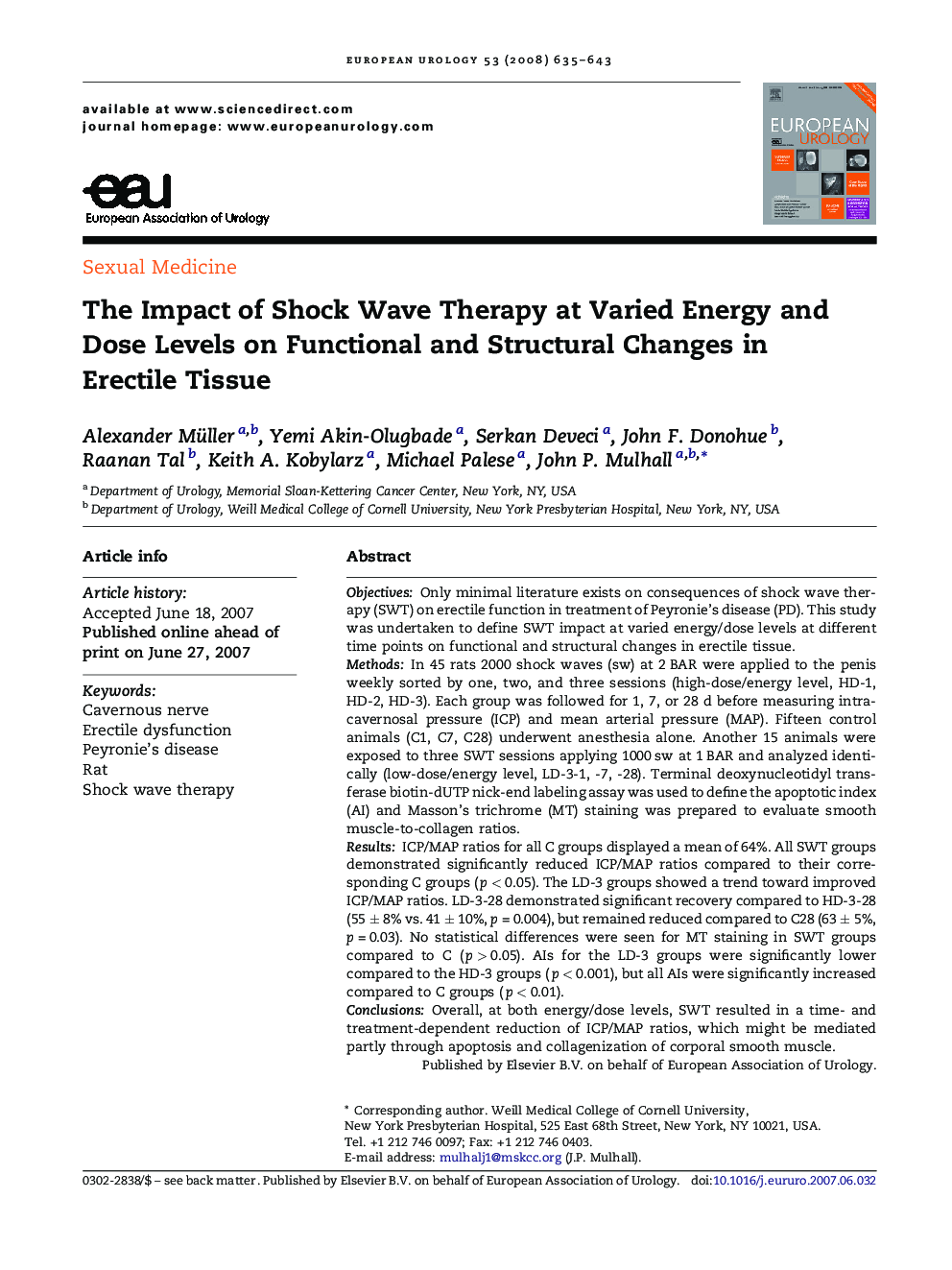| Article ID | Journal | Published Year | Pages | File Type |
|---|---|---|---|---|
| 3929445 | European Urology | 2008 | 9 Pages |
ObjectivesOnly minimal literature exists on consequences of shock wave therapy (SWT) on erectile function in treatment of Peyronie's disease (PD). This study was undertaken to define SWT impact at varied energy/dose levels at different time points on functional and structural changes in erectile tissue.MethodsIn 45 rats 2000 shock waves (sw) at 2 BAR were applied to the penis weekly sorted by one, two, and three sessions (high-dose/energy level, HD-1, HD-2, HD-3). Each group was followed for 1, 7, or 28 d before measuring intracavernosal pressure (ICP) and mean arterial pressure (MAP). Fifteen control animals (C1, C7, C28) underwent anesthesia alone. Another 15 animals were exposed to three SWT sessions applying 1000 sw at 1 BAR and analyzed identically (low-dose/energy level, LD-3-1, -7, -28). Terminal deoxynucleotidyl transferase biotin-dUTP nick-end labeling assay was used to define the apoptotic index (AI) and Masson's trichrome (MT) staining was prepared to evaluate smooth muscle-to-collagen ratios.ResultsICP/MAP ratios for all C groups displayed a mean of 64%. All SWT groups demonstrated significantly reduced ICP/MAP ratios compared to their corresponding C groups (p < 0.05). The LD-3 groups showed a trend toward improved ICP/MAP ratios. LD-3-28 demonstrated significant recovery compared to HD-3-28 (55 ± 8% vs. 41 ± 10%, p = 0.004), but remained reduced compared to C28 (63 ± 5%, p = 0.03). No statistical differences were seen for MT staining in SWT groups compared to C (p > 0.05). AIs for the LD-3 groups were significantly lower compared to the HD-3 groups (p < 0.001), but all AIs were significantly increased compared to C groups (p < 0.01).ConclusionsOverall, at both energy/dose levels, SWT resulted in a time- and treatment-dependent reduction of ICP/MAP ratios, which might be mediated partly through apoptosis and collagenization of corporal smooth muscle.
